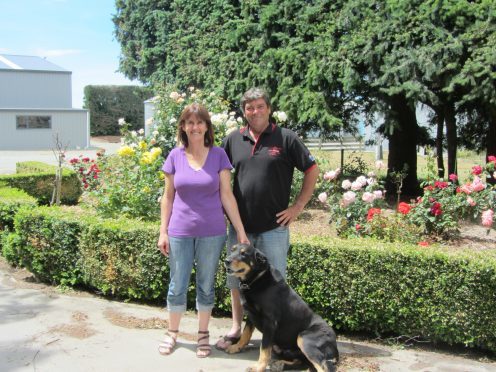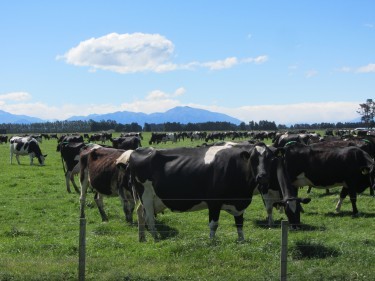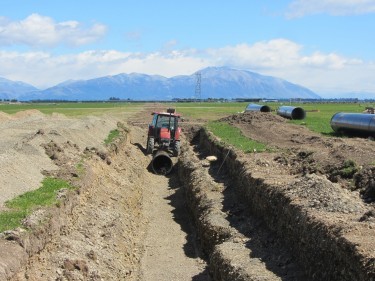A “mid-life crisis” and a desire to move away from milking cows was the impetus for one New Zealand family to delve into the world of share-farming.
The Duncans – Ross and Sue and their children, Thomas, John and Gemma – now own three farms in mid-Canterbury with share-farming set-ups in operation on two.
It all started 20 years ago when Ross decided he wanted to swap milking cows for growing crops – a move his wife Sue describes as his “mid-life crisis”.
At the time the family was on Pinefields Farm – a 340-acre dairy enterprise – which they were readying to sell in anticipation of buying a different farm.
However a suggestion from their bank manager to keep the dairy and set up a share-milking system instead was adopted and now a similar arrangement has been established on a second dairy – the 450-acre Willowfields Farm.
Ross and Sue now live at Pendarves Farm – a 720-acre arable enterprise which is also used to overwinter around 1,100 cows and fatten around 3,000 store lambs every year.
Cropping on the farm comprises clover seed, barley, rye grass for seed, wheat, vining peas, maize, kale and green-feed oats.
Over on their two dairies two different share-farming systems are in place.
First up is a 50/50 share-milking agreement at Willowfields Farm, where 720 cows are milked.
“We own the farm and the [share-milker] owns the cows. We then go 50:50 in the milk cheque,” said Ross.
“I put the fertiliser on and we go halves on the water and halves on all the feed. He pays all the animal health and staff to run the farm and he supplies his own equipment to run it.”
The share-milker gets the profits from any cull cows or bull calves, while any dividends from the milk company, which is farmers’ co-operative Fonterra, go to the Duncans.
Meanwhile, at Pinefields a slightly different share-farming system is in place.
The Duncans have a variable order contract, which means they own the cows and the farm and the share-milker gets a proportion of the milk cheque in return for providing plant and labour.
The current split is 79% to the Duncans and 21% to the share-milkers, who look after the farm’s herd of 500 Friesian cross cows.
Both types of agreement are on three-year contracts.
According to Sue, both 50:50 share-milking and variable order contracts are common practice in New Zealand and can often be adopted in a family situation giving children the chance to buy into their parent’s farm.
“We advertise through Fonterra and last time we got 39 applications,” she said.
“It’s not easy choosing them. They start on June 1 and don’t get their first milk cheque until September to they need to have a bit of money behind them.”
Both Ross and Sue say the systems suit them because it keeps their hand in at dairying, while giving others a chance to get into the sector.
Water supplies
While farmers in the south of Scotland and north of England are struggling to cope in floods, their counterparts in New Zealand are doing all they can to capture and store vital supplies of water.
On the area of the Canterbury Plains, where the Duncan family farms, more than £48million is being invested in a new farm water supply system called the Ashburton Lyndhurst Scheme.
The creation of the scheme has been driven by concerns over open-ditch irrigation schemes which are used on many farms in the region.
Environmentalists have argued that the schemes, which see blocks of land flooded with a gush of water, are not sustainable or efficient.
Instead farmers are being encouraged to adopt piped irrigation chiefly using centre pivot irrigators.
“There’s been border dyke irrigation here since the 1940s but it’s not very efficient because it puts on too much water at once,” said Sue.
The four-year project to build the new scheme is completely funded by farmers, and it will result in the annual cost of water to farms increasing from around $40/hectare (£17.50) to nearer $300/hectare (£132).
Around 258km of pipes will be laid as part of the scheme, covering an area of around 104,000 acres.
And according to the Duncans, it’s not just the cost of water that will increase. Farmers will have to ensure they are set up with irrigation equipment, which can costs hundreds of thousands of dollars.
“It’s changing the way of farming,” said Ross.


